Homotherium crenatidens
188188Homotherium crenatidens (Homotherium crenatidens Fabrini, 1890)
Order: Carnivora
Family: Felidae
Subfamily: †Machairodontinae
Tribe: †Homotherini
Size: 2,3 m in length, 120 cm in height, 150-250 kg of weight.
Time period: late Pliocene - Early Pleistocene (Africa, Eurasia)
Homotherium is an extinct genus of machairodontine saber-toothed cats, often termed scimitar cats, endemic to North America, Europe, Asia, and Africa during the Pliocene and Pleistocene epochs (5 mya–10 000 years ago), existing for approximately 5 million years.
Homotherium had relatively shorter upper canines than in the case of smilodontine saber-toothed cats, but they were flat, serrated and longer than those of any living cat. Large Incisors and small lower canines formed a powerful puncturing and gripping device.
Compared to the skull of a tiger or a lion, Homotherium had a longer snout, a larger nasal opening, a longer sagittal crest at the back of the skull, narrower cheek-bones and a battery of upper incisor teeth which stuck out more prominently from the teeth behind it. Its dorsal profile was almost straight lined and the lower jaw exhibited flanges not as prominent as those of Megantereon.
It had hind limbs of similar length to those of tigers and lions(Jordi Agusti) and proportionally longer and in some ways weaker forelimbs. Some features of the hind limb were once taken to indicate a partially plantigrade stance, but the interpretation is now recognized as incorrect(Alan Turner).
In 2008, the distal end of a huge left humerus was uncovered by the crew of the fishing vessel from the bottom of the North Sea. An extensive comparative study by Dr. Mol and Van Logchem led to the attribution of the bone to the late Pliocene to the early Pleistocene scimitar-toothed cat, Homotherium crenatidens, weighing around 300 kg. The other species of scimitar-toothed cat that is known from the North Sea, is smaller Homotherium latidens which had a slender body design of typical Homotherium morpho-type.
The earlier Homotherium therefore, were probably heavier and more massive than the later, more cursorial adapted species such as H.latidens, H.serum.
Homotherium crenatidens (Homotherium crenatidens Fabrini, 1890)
Order: Carnivora
Family: Felidae
Subfamily: †Machairodontinae
Tribe: †Homotherini
Size: 2,3 m in length, 120 cm in height, 150-250 kg of weight.
Time period: late Pliocene - Early Pleistocene (Africa, Eurasia)
Homotherium is an extinct genus of machairodontine saber-toothed cats, often termed scimitar cats, endemic to North America, Europe, Asia, and Africa during the Pliocene and Pleistocene epochs (5 mya–10 000 years ago), existing for approximately 5 million years.
Homotherium had relatively shorter upper canines than in the case of smilodontine saber-toothed cats, but they were flat, serrated and longer than those of any living cat. Large Incisors and small lower canines formed a powerful puncturing and gripping device.
Compared to the skull of a tiger or a lion, Homotherium had a longer snout, a larger nasal opening, a longer sagittal crest at the back of the skull, narrower cheek-bones and a battery of upper incisor teeth which stuck out more prominently from the teeth behind it. Its dorsal profile was almost straight lined and the lower jaw exhibited flanges not as prominent as those of Megantereon.
It had hind limbs of similar length to those of tigers and lions(Jordi Agusti) and proportionally longer and in some ways weaker forelimbs. Some features of the hind limb were once taken to indicate a partially plantigrade stance, but the interpretation is now recognized as incorrect(Alan Turner).
In 2008, the distal end of a huge left humerus was uncovered by the crew of the fishing vessel from the bottom of the North Sea. An extensive comparative study by Dr. Mol and Van Logchem led to the attribution of the bone to the late Pliocene to the early Pleistocene scimitar-toothed cat, Homotherium crenatidens, weighing around 300 kg. The other species of scimitar-toothed cat that is known from the North Sea, is smaller Homotherium latidens which had a slender body design of typical Homotherium morpho-type.
The earlier Homotherium therefore, were probably heavier and more massive than the later, more cursorial adapted species such as H.latidens, H.serum.

-797x638.jpg)
-797x638.jpg)
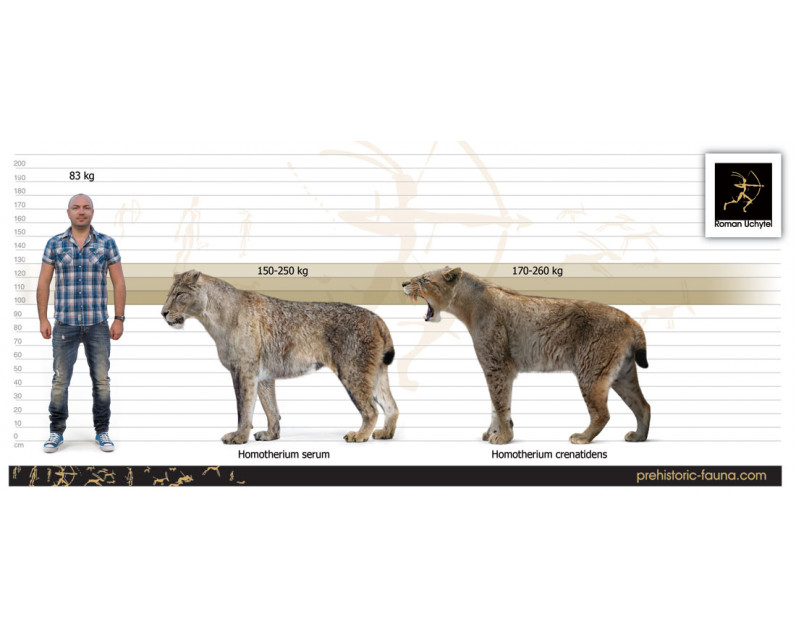
-70x56.jpg)
-70x56.jpg)

1-346x277.jpg)
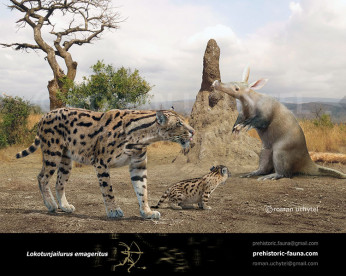
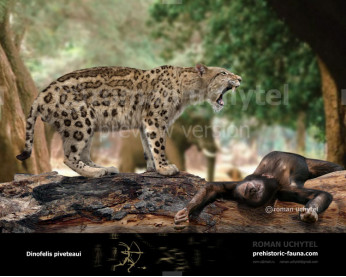
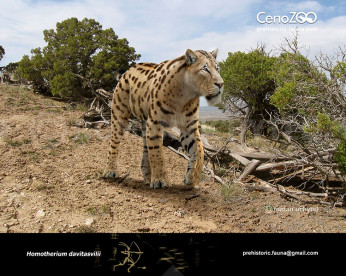
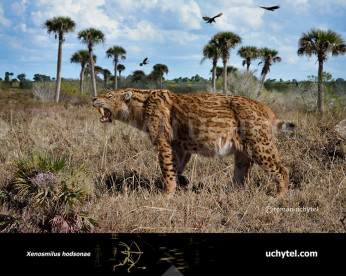
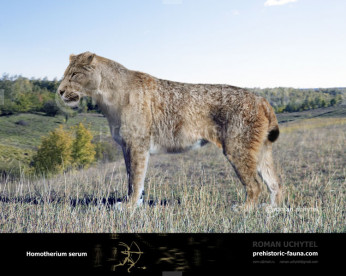
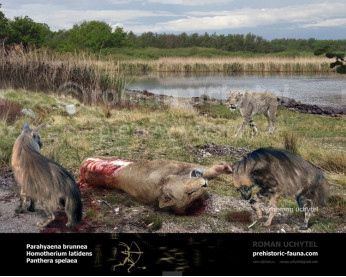
1-346x277.jpg)